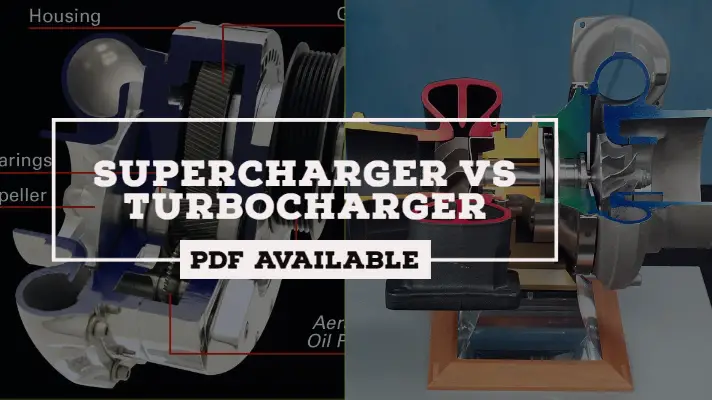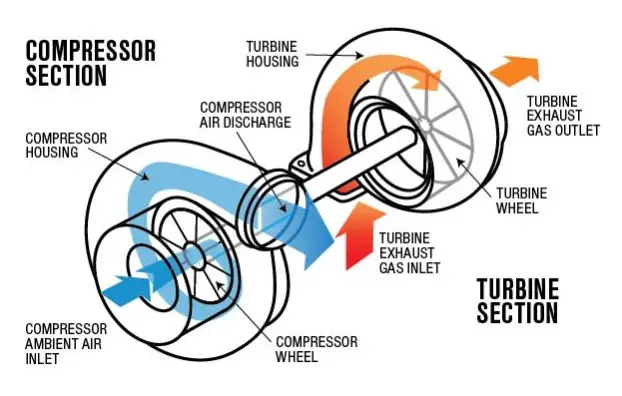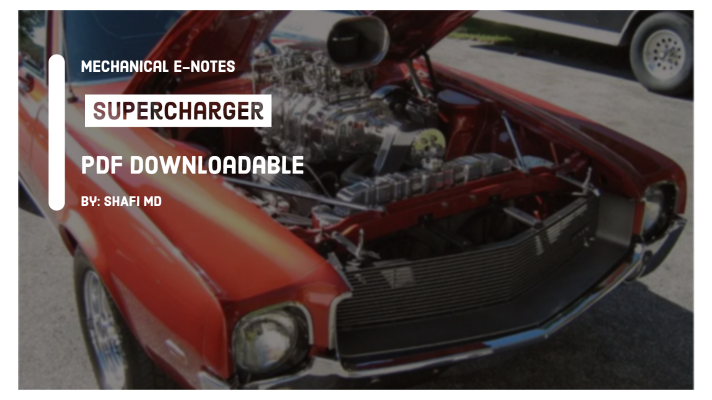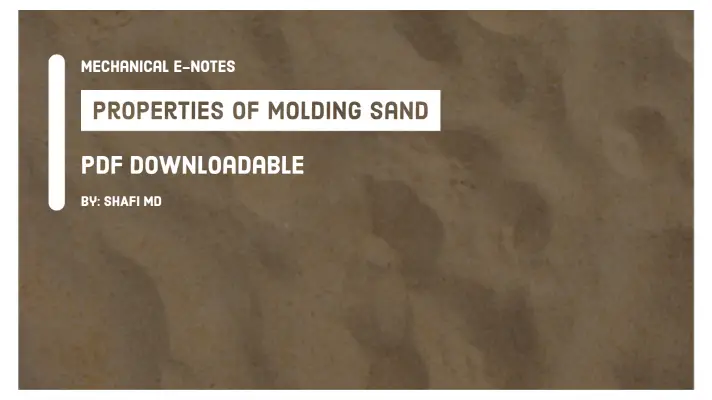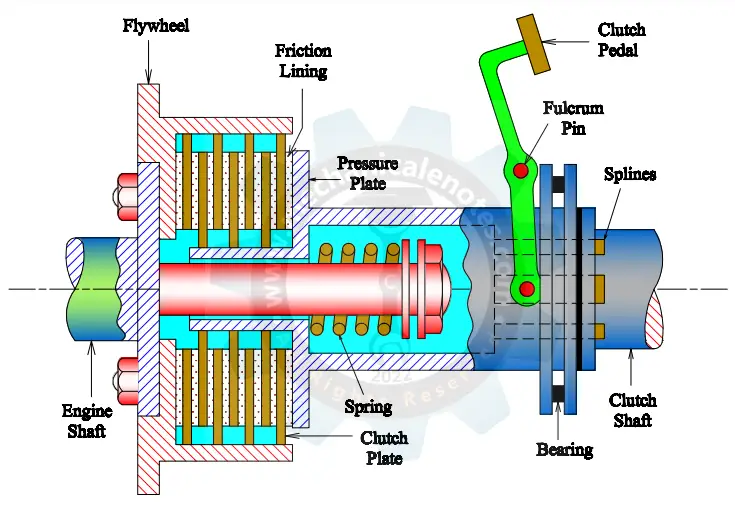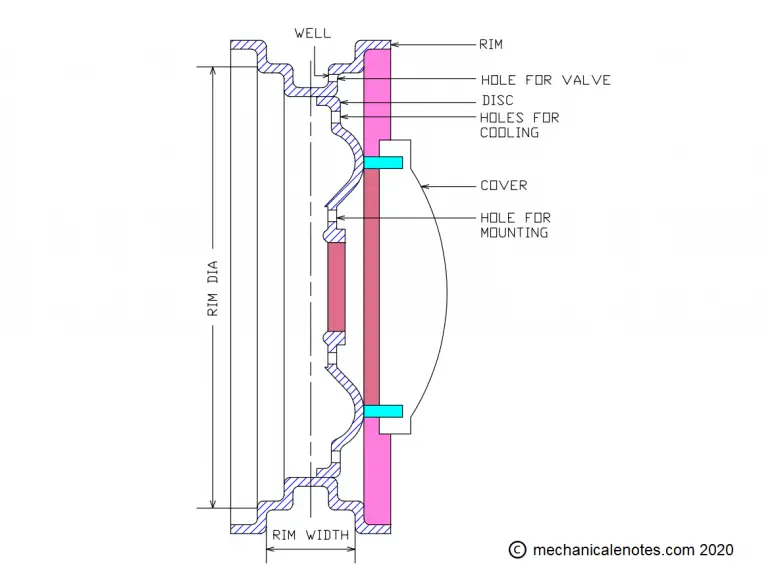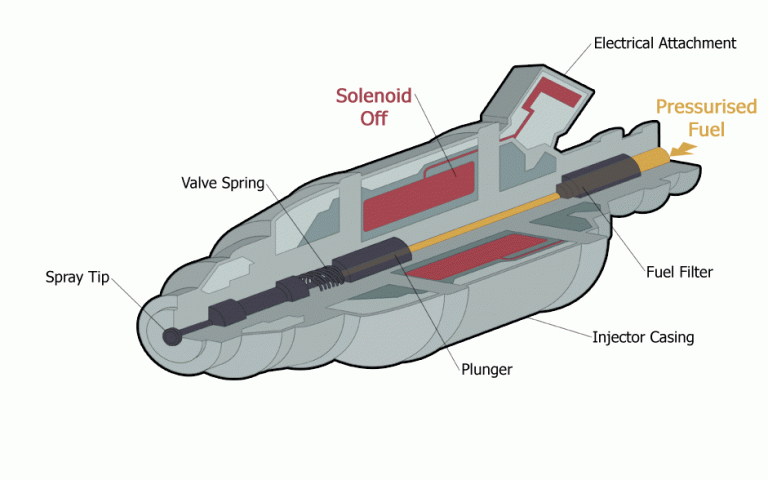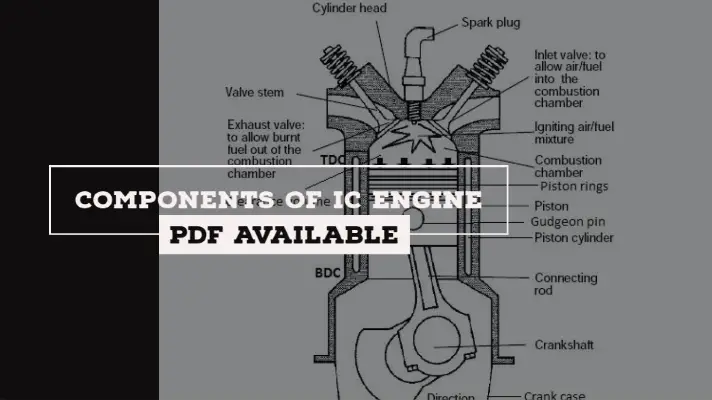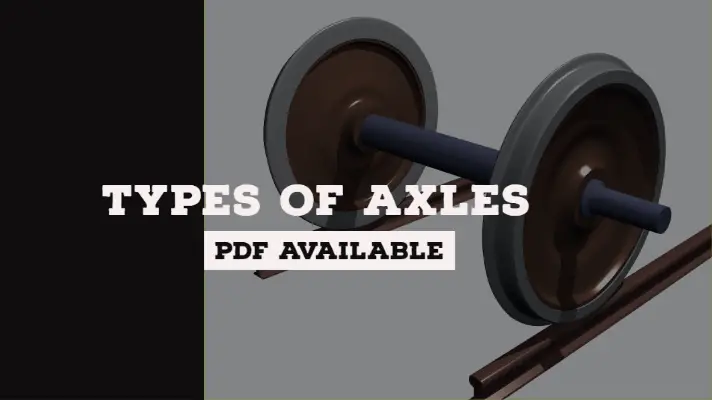Types of Oil Filters: Cartridge, Edge, and Centrifugal type Oil Filters [PDF]

An oil filter is used to remove the dust particles/contaminants from the oil before it is feeding to all the parts of the engine.
Hey guys, in the last article, we had discussed Classification of chasis based on Front-wheel Drive & Rear Wheel Drive, Classification of IC Engines etc and in today's article, we are going to discuss Types of oil filters.
Let's dive into the article.
Types of Oil Filters:
There are 3 types of Oil Filters, and those are:
- Cartridge Type Oil Filter
- Edge Type Oil Filter
- Centrifugal Type Oil Filter
The detailed explanation of types of oil filters is as follows:
Cartridge Type Oil Filter:
Cartridge type oil filter consists of filtering elements which are placed in the metallic casing for removing the impurities present in the lubricating oil and is mostly used in automobile engines.
Currently, filter elements with fine pores have been employed which has made it practicable to stop or arrest the particles of size down to within the region of 5 microns.
In the filter shown in the figure, the oil enters the filter at the top of the casing and passes through the filter elements as shown by the arrow marks.
The pure oil has to be passed through the porous metallic tube from where the oil goes to the outlet for circulation. A drain plug is also provided as shown in the figure:
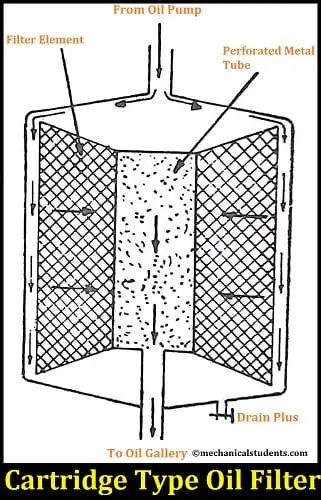
The filtering elements of two types are either be cleaned or to be changed at every interval of 10000 kilometers.
Edge Type Oil Filter:
Edge type oil filter is also called a stack type Oil filter.
In this oil filter, the oil is made to pass through several closely spaced discs which are mounted on the center spindle as well as the square rod alternately as shown in the figure:
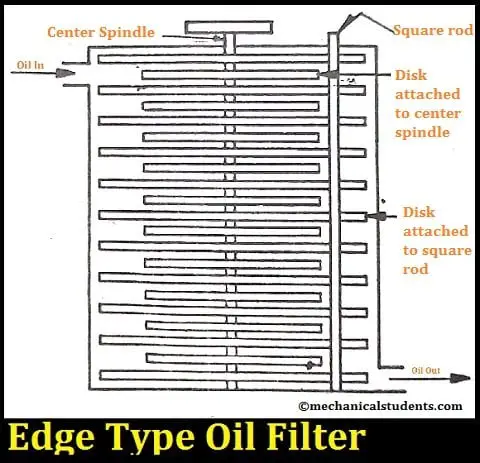
The clearance or gap between two successive discs is of few microns only.
The oil is allowed to pass through these spaces between the discs and due to the small spaces involved in between the discs, the impurities are left on the disk periphery itself from where they are removed periodically using operating the central knob.
This may be connected to the clutch system and operated periodically using clutch action or it can be done either manually also.
Centrifugal Type Oil filter:
In this Oil Filter, the impure oil from the engine enters the hollow Central spindle having holes around its periphery as shown in the figure.
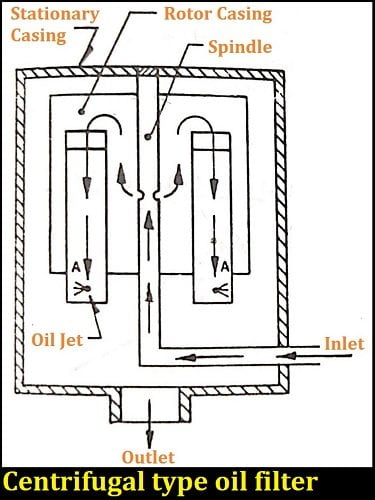
The impure/dirty oil comes out of these holes and fills the rotor casing after which it passes through the tubes A at the ends of which Jets are attached.
The oil under pressure passes through these jets and due to the reaction of which, it gives motion to the rotor casing in the opposite direction so that it starts rotating.
The oil impinges on the outer stationary casing under heavy pressures where the impurities are retained there itself and cleaned oil falls below from where it is to be passed to other parts of the engine.
Depending upon the oil pressure circulating the oil, the working speed of the rotor is usually between 2000 rpm and 7000 rpm.
The filter walls have to be cleaned at intervals of about 70000 kilometer.
Resources:
Types of Fuel Supply System in Petrol Engine
A.C. Mechanical Fuel Pump & S.U. Electrical Fuel Pump: Parts and Working Principle
Petrol Injection System
References [External Links]:
- Fuel Filter - an overview | ScienceDirect Topics
- 5 Quick Facts About Fuel Quality and Filtration
Media Credits:
- Feature Image: By PHGCOM - Own work, CC BY-SA 3.0, https://commons.wikimedia.org/w/index.php?curid=4339596, Modified by author


